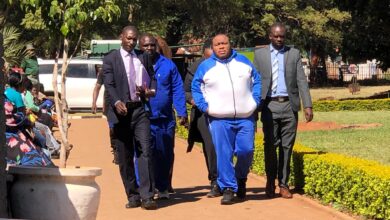
Step-by-step guide to how Indians in the U.S. benefit from revised Employment Authorization Documents rules.In a groundbreaking move, the U.S. Citizenship and Immigration Services (USCIS) has released new policy guidance on eligibility criteria for employment authorization documents (EADs) based on compelling circumstances. This revision opens up opportunities for individuals facing adverse situations, such as termination from employment or visa backlogs, to apply for an EAD and continue working lawfully in the United States. So, how can an Indian in the U.S. benefit from these revised rules? Let’s take a step-by-step look at the process.To be eligible for an initial EAD based on compelling circumstances, the applicant must meet certain requirements. These include being the principal beneficiary of an approved Form I-140, belonging to specific nonimmigrant statuses like E-3, H-1B, H-1B1, O-1, or L-1, and not having filed an adjustment of status application. Additionally, the applicant’s priority date should not align with an available immigrant visa based on the U.S. Department of State’s Visa Bulletin. It’s crucial to fulfill these criteria before proceeding.
Step 2: Gather Supporting Evidence
Compelling circumstances can arise from various situations such as serious illness, disability, employer disputes, or significant disruption to the employer. Applicants must compile a compelling case by providing evidence that substantiates their circumstances. For instance, individuals with approved immigrant visa petitions in oversubscribed categories can submit documents like enrollment records, mortgage records, or long-term lease agreements to demonstrate the potential impact of job loss on their family, such as forced relocation.Step 3: File Form I-765
The next step is to complete and file Form I-765, the Application for Employment Authorization. Ensure accurate and thorough completion of the form, as any mistakes or missing information can delay the process. Include all relevant supporting documentation to strengthen your case and increase the chances of approval.
Step 4: Submit Biometrics
As part of the application process, the applicant and their dependents must provide biometrics, which may include fingerprinting and photographs. This step is crucial for identity verification purposes and helps USCIS process the application efficiently.
Step 5: Await USCIS Decision
Once the application is submitted, USCIS will review it based on the compelling circumstances guidance provided. Adjudication of these EADs involves assessing eligibility, reviewing evidence, and making a discretionary decision. It’s essential to exercise patience during this waiting period, as processing times may vary.Also Read | Big US immigration update provides cheer for H-1B and L-1 visa holders amid cloud of uncertainty and joblessness
If the application is approved, congratulations! The applicant will receive an Employment Authorization Document, granting them the legal right to work in the United States. It’s important to adhere to the specified validity period and maintain compliance with all applicable laws and regulations.
It’s worth noting that individuals with a compelling circumstances-based EAD are considered to be in a period of authorized stay, meaning they do not accrue unlawful presence. However, eligibility for adjustment of status under INA 245(a) may be affected. Nevertheless, such individuals can still leave the U.S. and apply for an immigrant or nonimmigrant visa at a consular post abroad, without triggering grounds of inadmissibility due to unlawful presence.
The revised rules for employment authorization provide hope and opportunities for individuals facing challenging situations. By following this step-by-step guide, an Indian in the U.S. can navigate the process and potentially avail the benefits of the revised Employment Authorization Documents rules.
Source: hindustantimes
In other news- Indian-origin doctor who drove Tesla off cliff with family in US barred from practising medicine
Dharmesh A Patel, a radiologist, was charged with 3 counts of murder in January for intentionally driving a Tesla off a cliff with his family inside.

A US court has barred a 41-year-old Indian-origin doctor from practising medicine as he is facing multiple attempted murder charges for driving his family off a cliff in California, a media report said.Dharmesh A Patel, a radiologist, was charged with three counts of murder in January for intentionally driving a Tesla off a cliff with his wife and two children inside. Read more











